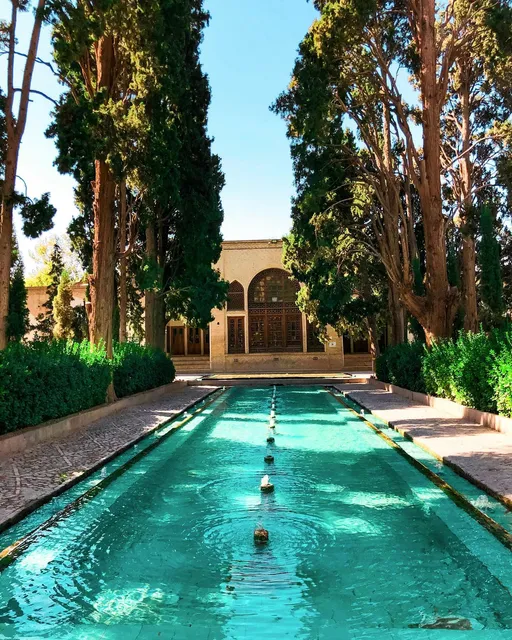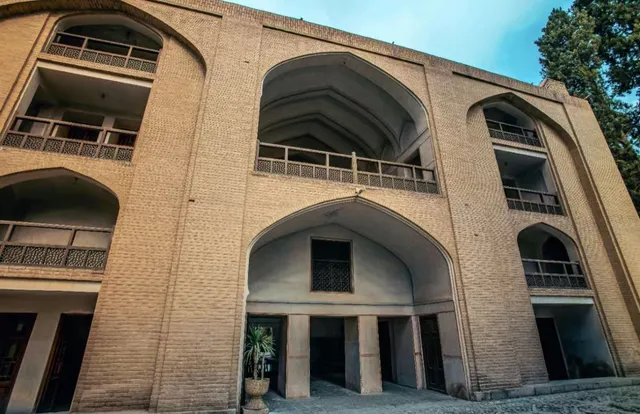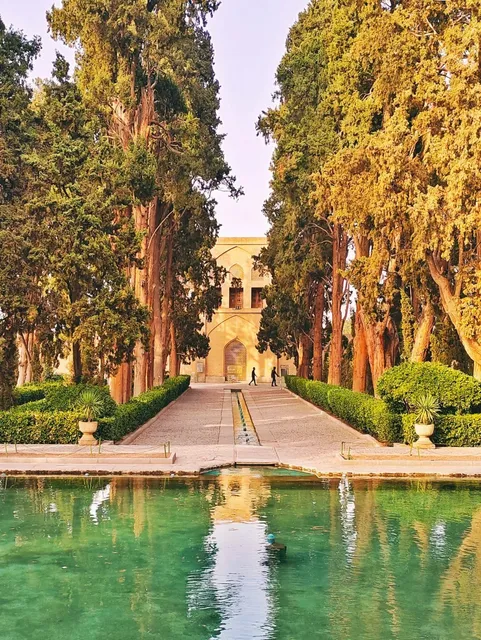n oasis of lush vegetation can be found in an arid region of Iran. The Fin Garden is regarded as one of the most beautiful gardens of its type, and it has been reported that this is the oldest surviving Persian garden in Iran. Reflecting its location and sacred symbolism, the Fin Garden is a masterpiece combining natural and man-made elements.
Creation of the Fin Garden
The Fin Garden (known also in Persian as ‘Bagh-e Fin’) is a traditional Persian garden located in Kashan, in the central Iranian province of Isfahan. Today, the Fin Garden is one of the nine gardens that form the UNESCO World Heritage Site known as the ‘Persian Garden’. This garden is believed to have been created during the early part of the Safavid Dynasty, around the first half of the 16th century.
Fin Garden, Kashan, Iran.
Fin Garden, Kashan, Iran. (ali reza / CC BY 2.0 )
The current design, however, may be traced to the reign of Shah Abbas I, the 5th Safavid Shah of Iran, who reigned from 1588 to 1629. Nonetheless, the Fin Garden continued to be developed over time. One significant period of restoration and enlargement occurred during the reign of the 2nd Qajar Shah of Iran, Fath-Ali Shah Qajar, who ruled from 1797 to 1834.
Golden Age of Classical Chinese Gardens Revealed: Archaeologists Uncover Ancient Garden near Buddhist Monastery
Finding Zen in the World’s Most Famous Rock Garden
A First-Ever Find in Egypt: 4,000-Year-Old Funerary Garden at Tomb Entrance
1840 depiction by Pascal Coste of the Kiosque Bagh Shah Fin.
1840 depiction by Pascal Coste of the Kiosque Bagh Shah Fin. ( Public Domain )
Features of a Persian Garden
As mentioned earlier, the Fin Garden is a Persian Garden. These gardens are distinguished by certain common features that date back to the time of the Cyrus the Great, who ruled the Achaemenid Empire during the 6th century BC. One of the most important principles shared by the Persian gardens is the chahar bagh (meaning ‘four gardens’) layout.
According to this design, a Persian garden, which is quadrilateral in shape, would be divided into four parts by waterways. These channels are supplied with water from a source, a fountain, for instance, located in the middle of the garden.
Fin Garden, Kashan, Iran. (Erwin Bolwidt/ CC BY NC SA 2.0 )
Persian gardens are meant to symbolize the harmony between the four Zoroastrian elements – sky, earth, water, and plants. With the advent of Islam, these gardens also came to represent the Garden of Eden, or the four gardens of Paradise, as mentioned in the Qur’an. Whilst a common layout may be found in all Persian gardens, the overall design has been adapted to the different climates they were being created in.
Natural Elements and Man-made Structures in the Garden
In the case of the Fin Garden, this Persian garden is located in a part of the country where the climate is arid. This contrast between the lush foliage within the garden and the barren landscape surrounding it is perhaps one of the factors contributing to the Fin Garden’s beauty. This is further enhanced by the natural and man-made elements in the garden. The orange trees in the garden, for example, exude a fragrant aroma when they are in blossom. Other plants in the Fin Garden include fruit trees such as apple trees and cherry trees, as well as flowers, including jasmine, tulips, lilies,...
Read more
 Learn more insights from Wanderboat AI.
Learn more insights from Wanderboat AI.










